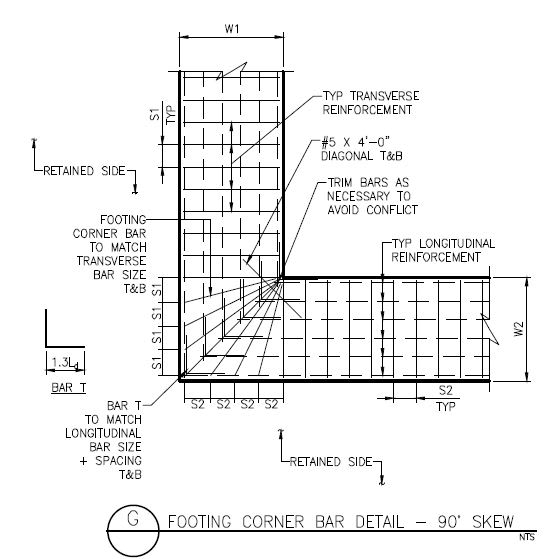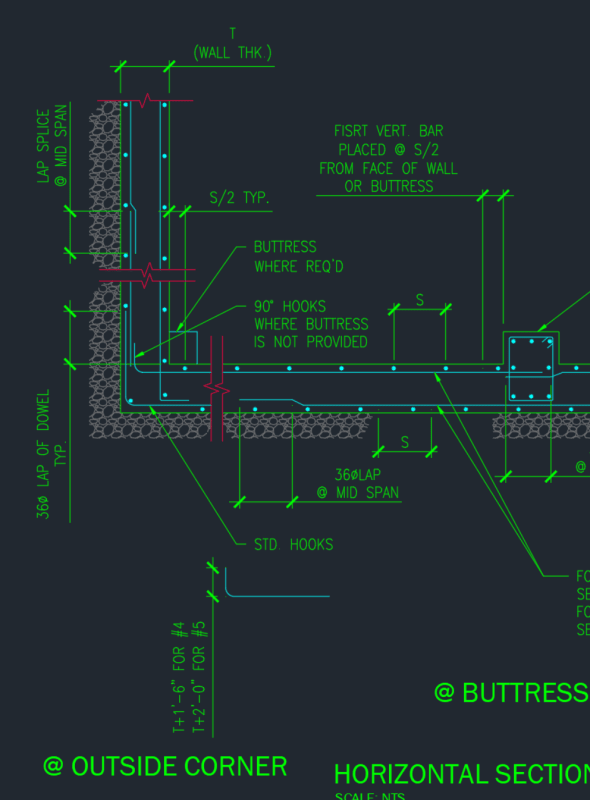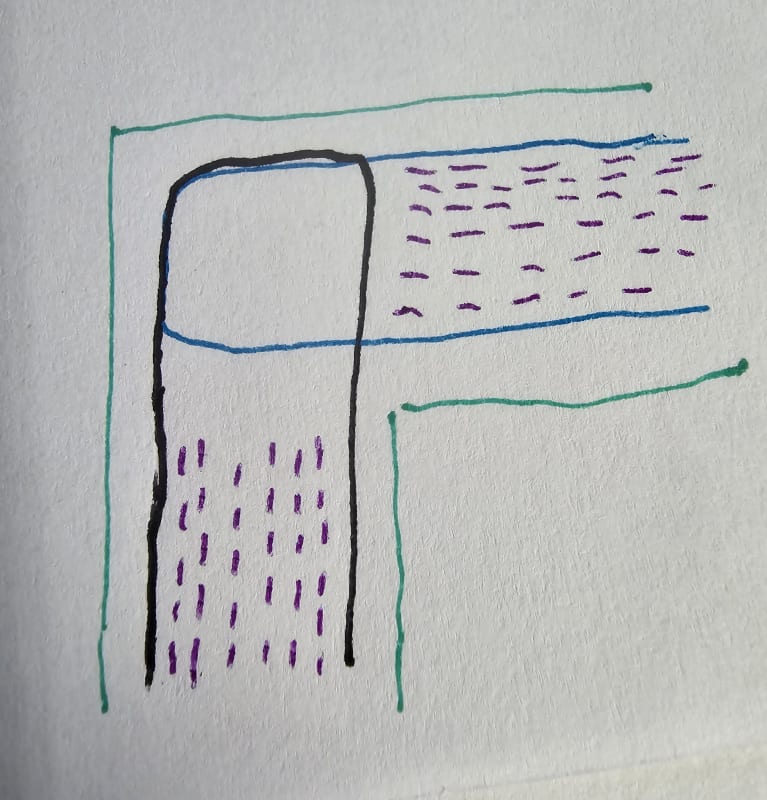That's a strange-looking cross section. Some thoughts:
- If this footing is just 12" thick, you might not have enough depth to develop your hooked bar.
- If the hooked bar is developed, the bottom bars might not be necessary.
- If you really want or need top bars, provide a few transverse bars to tie the longitudinal bars to.
- If the soil support is more or less even, the myriad of longitudinal bars serve almost no purpose. Especially the top bars.
- Unless there is some large vertical load in the corner, I'd just run the straight bars straight through.
- If there is an overturning force, there may be tension in the top of the footing, but no transverse bars to resolve it.
- Where the drafting is poor (e.g. bars running through bars) one tends to question the engineering behind the detail.





